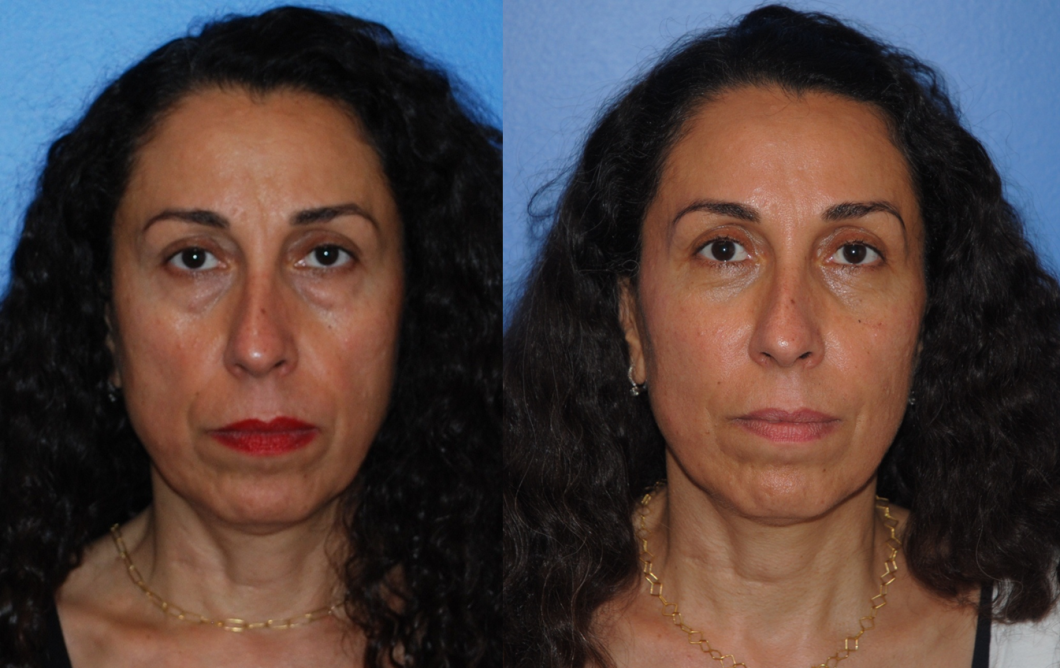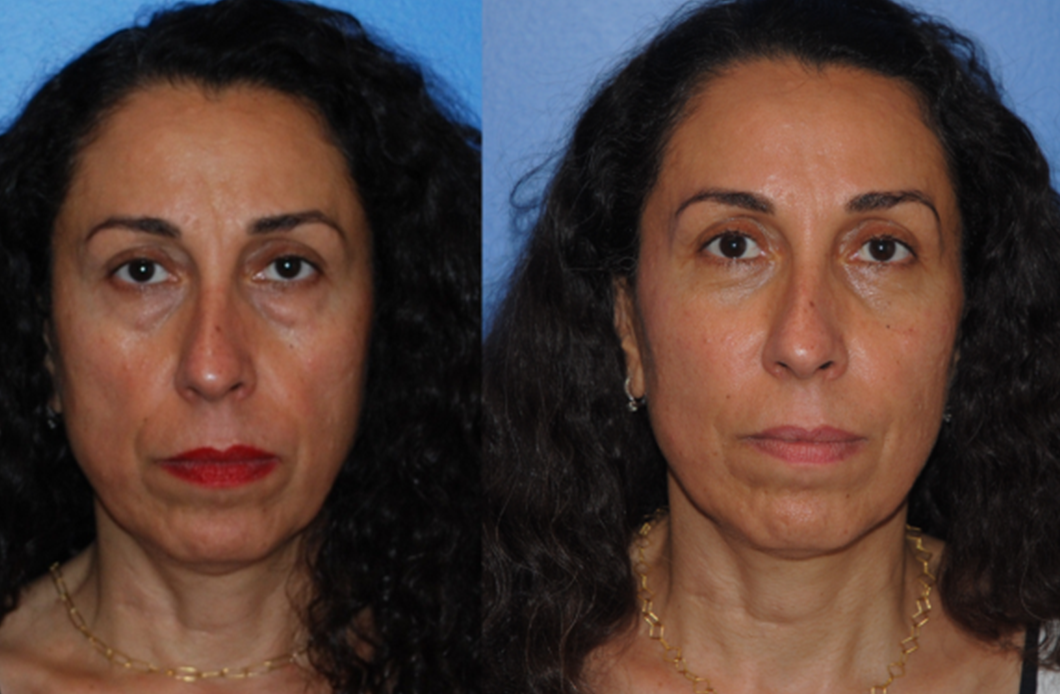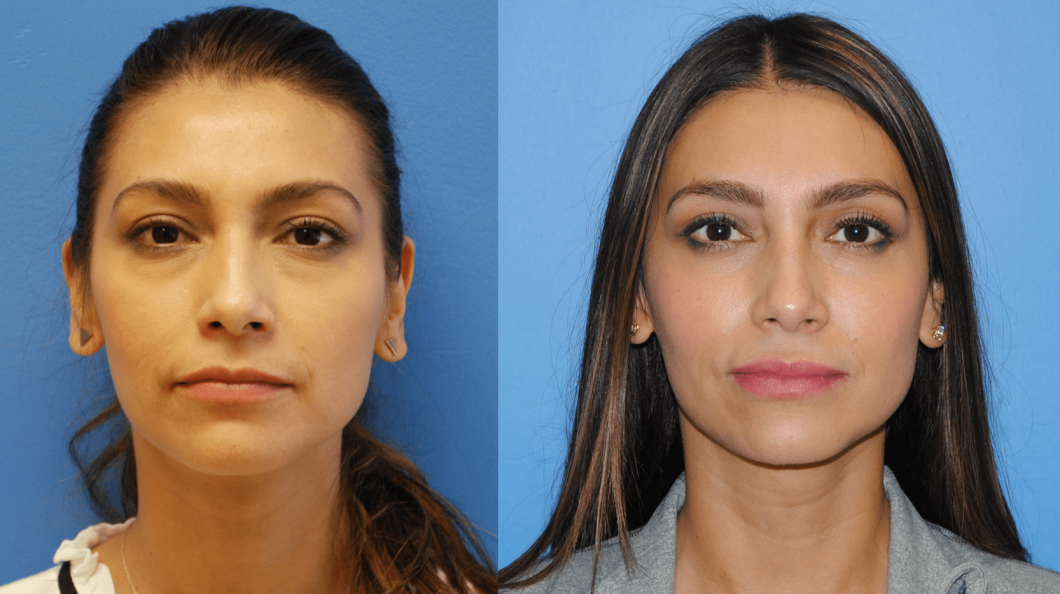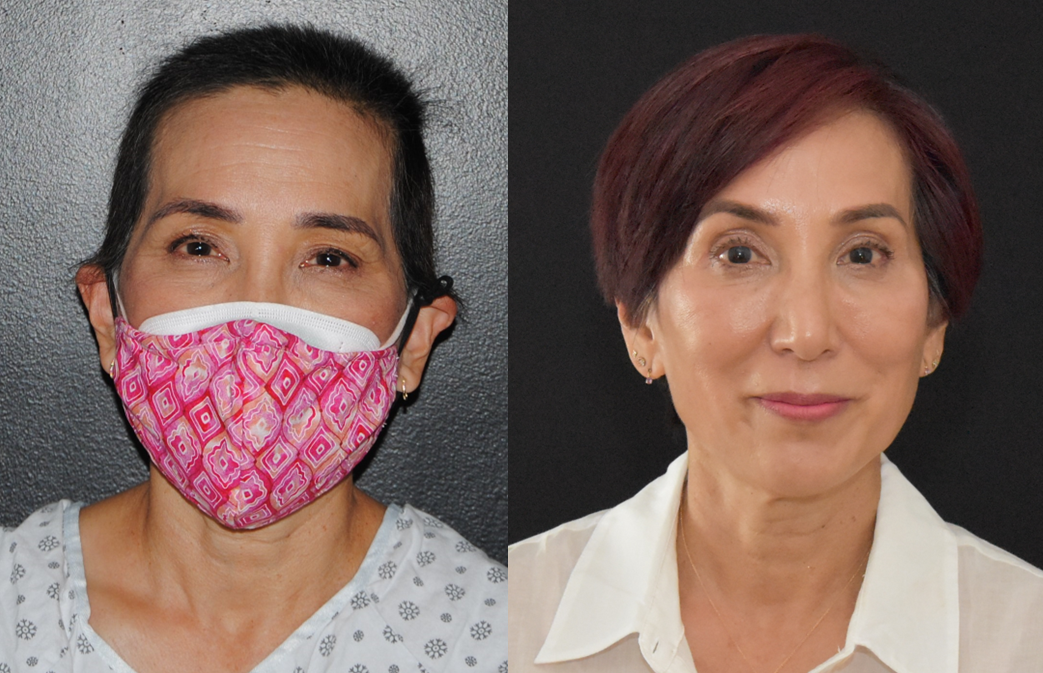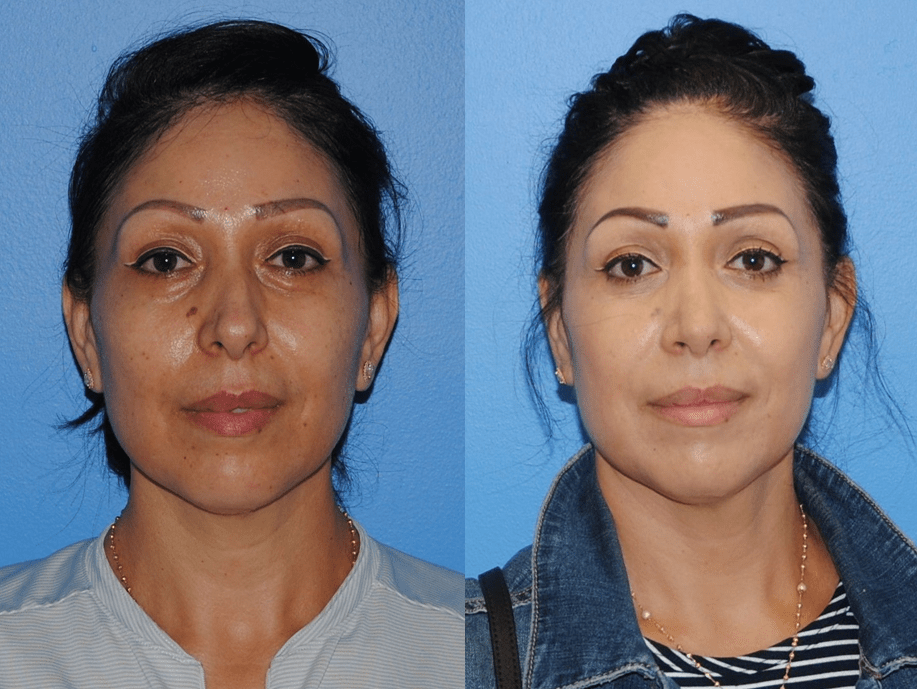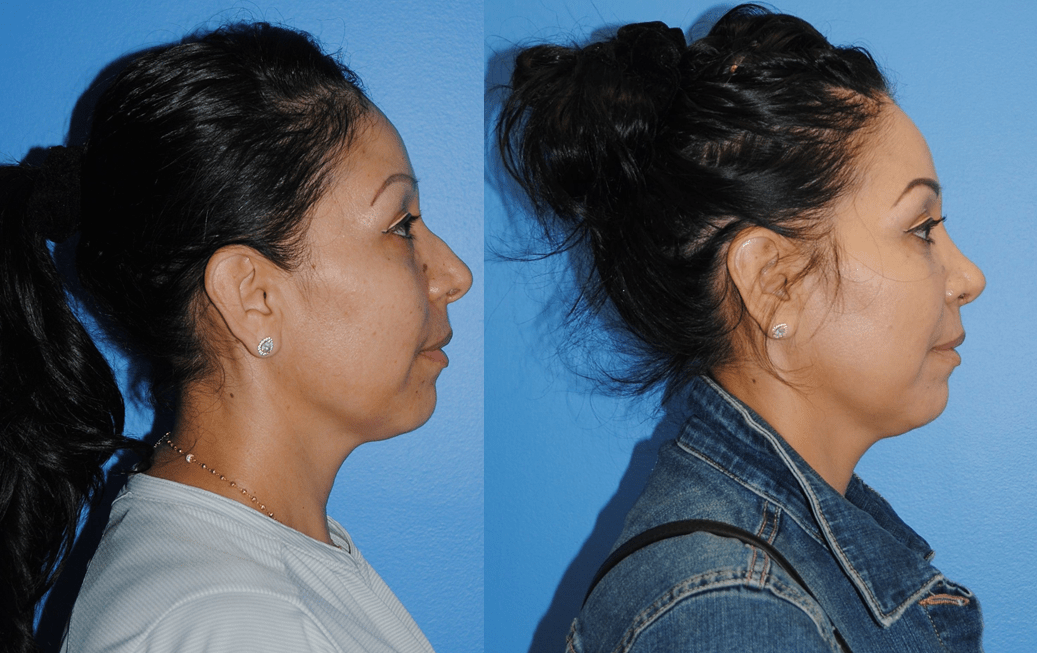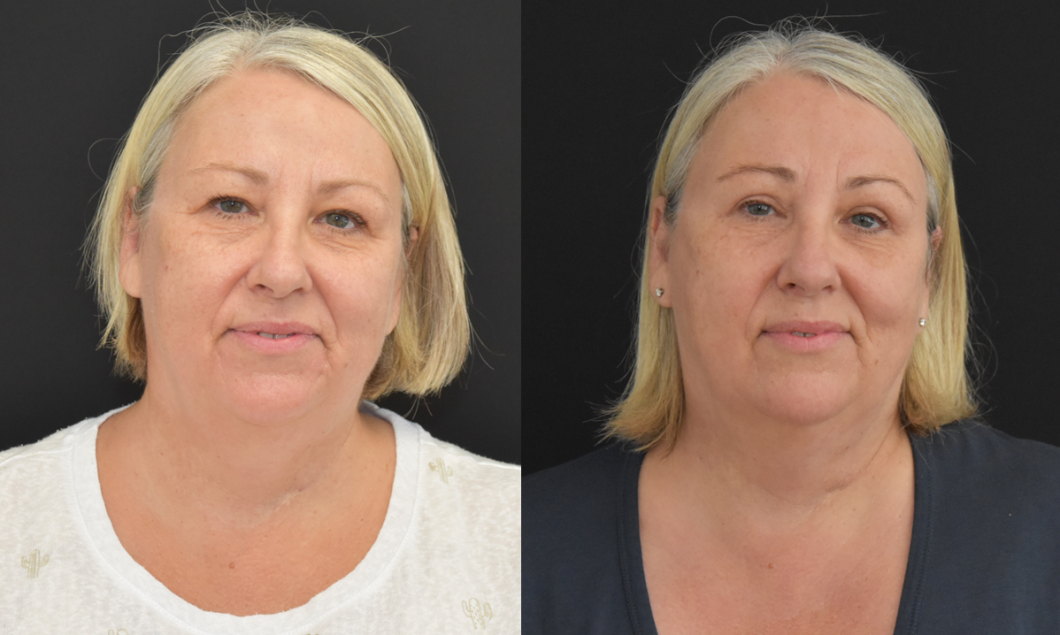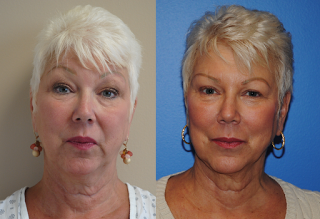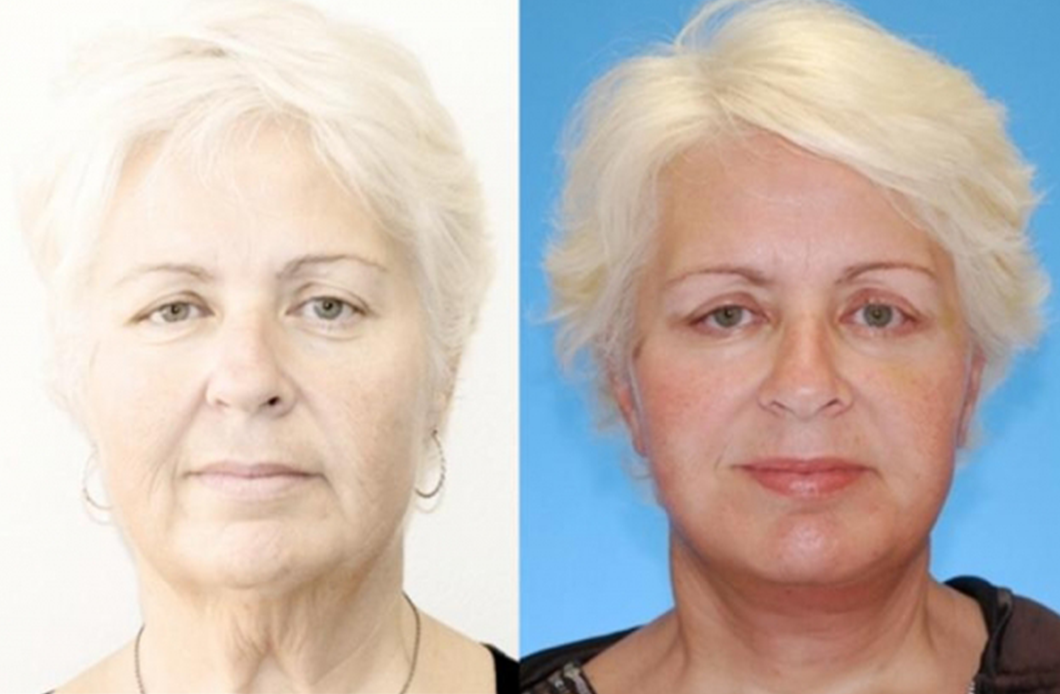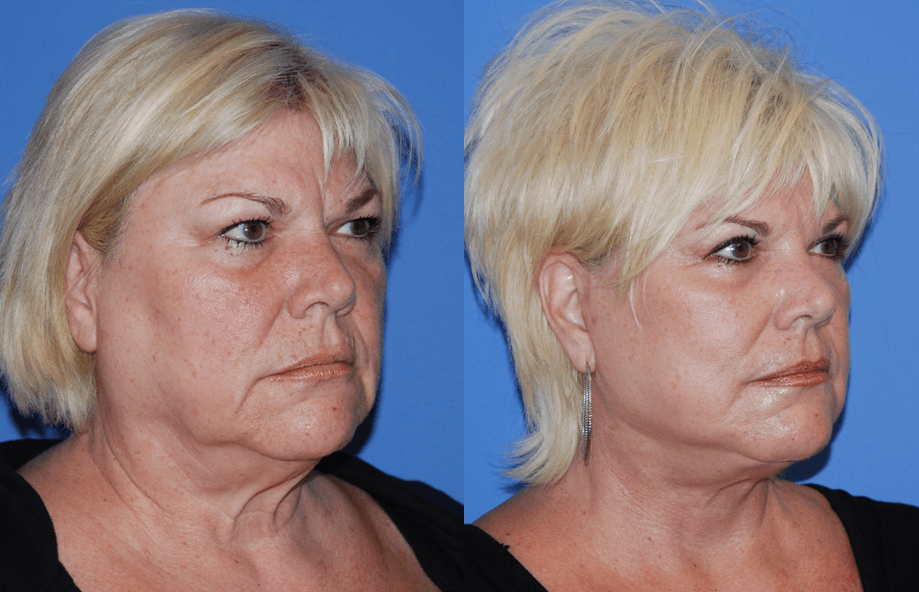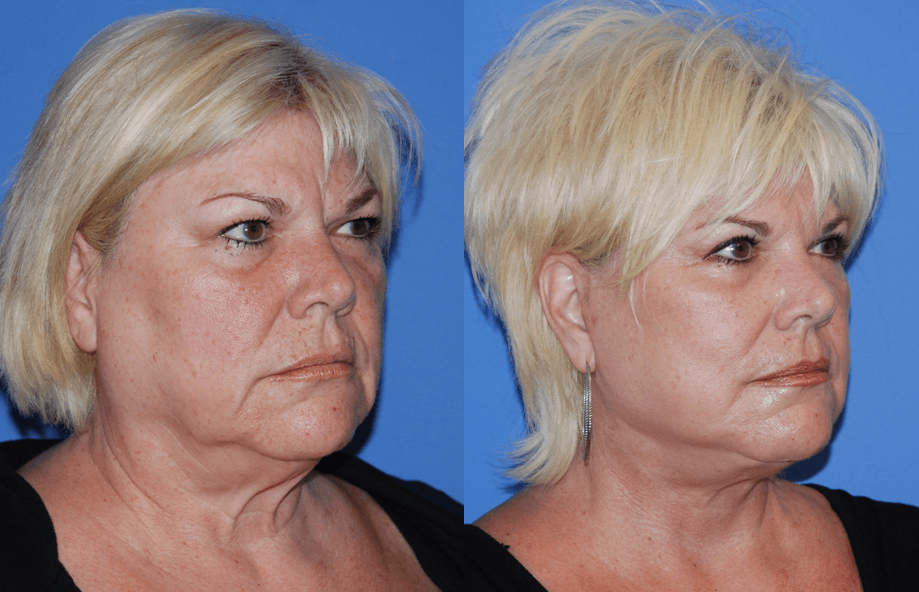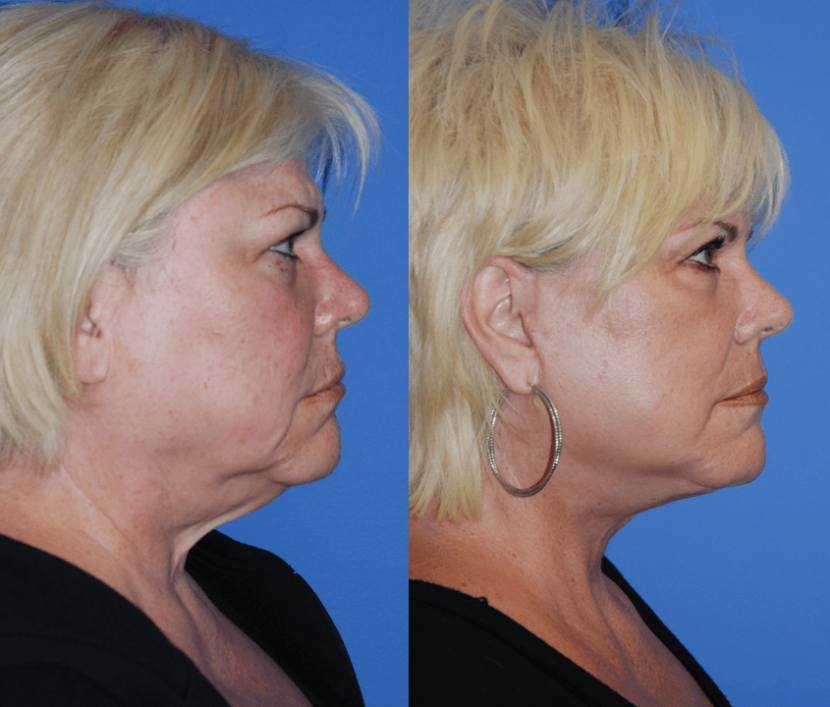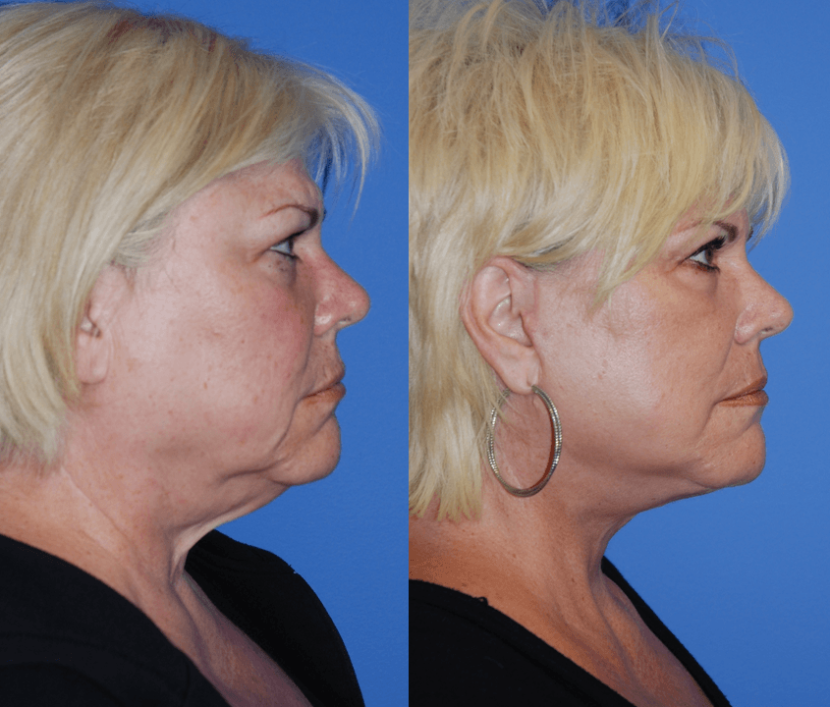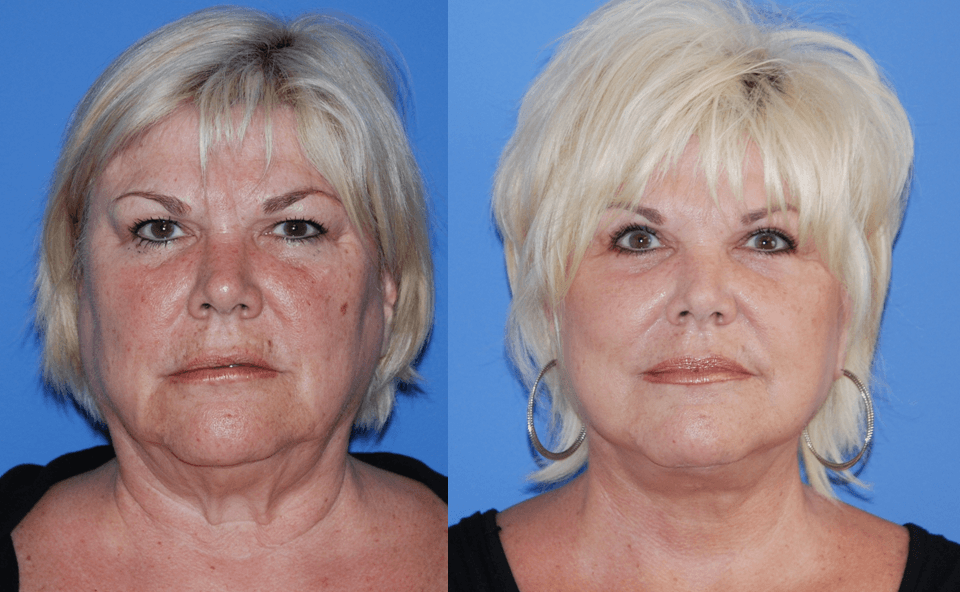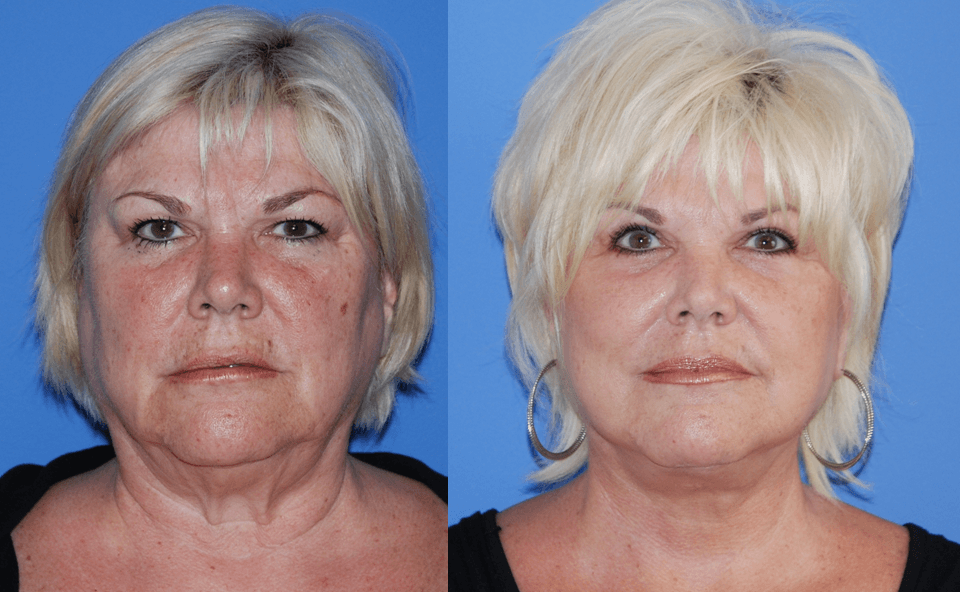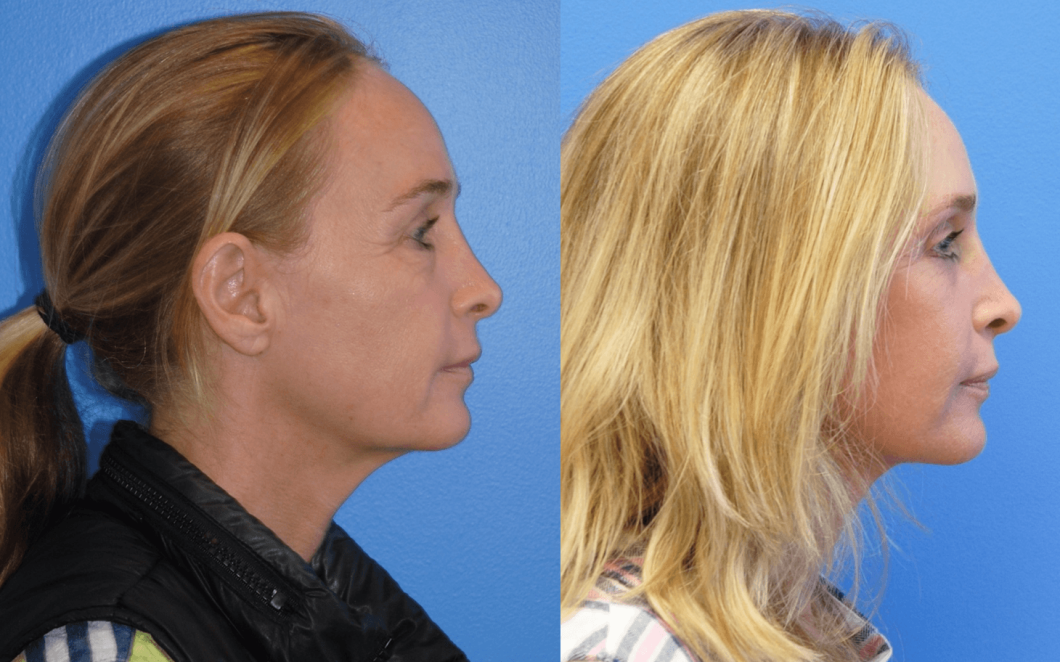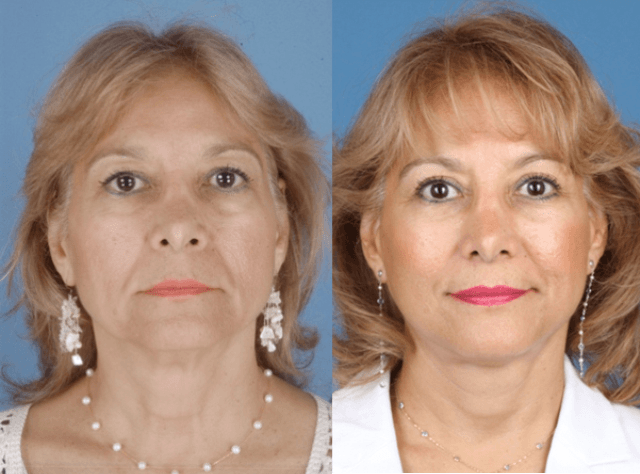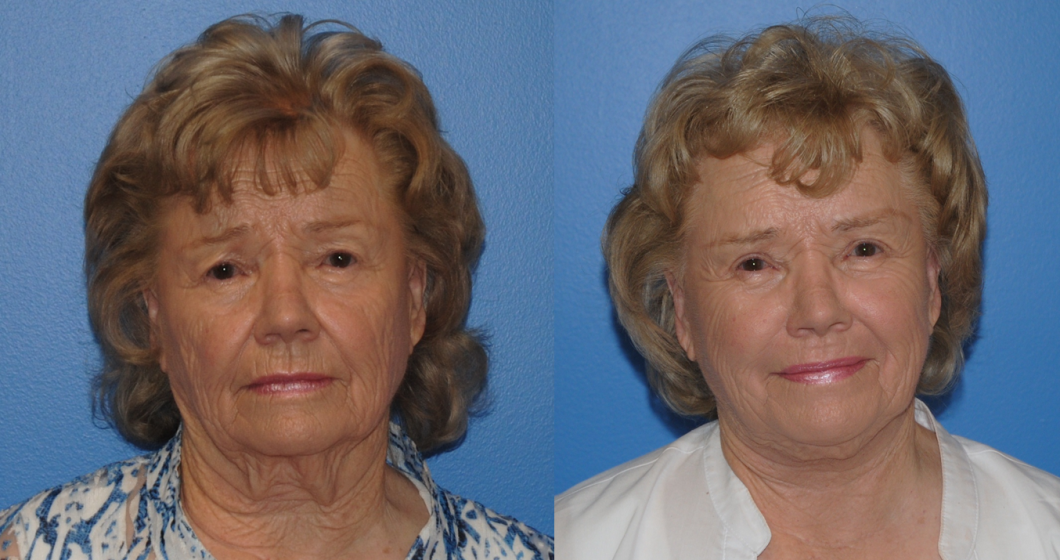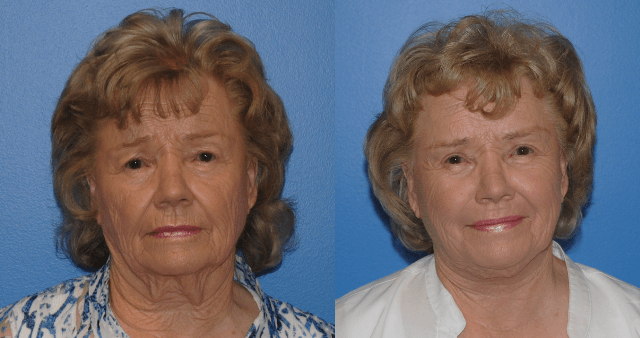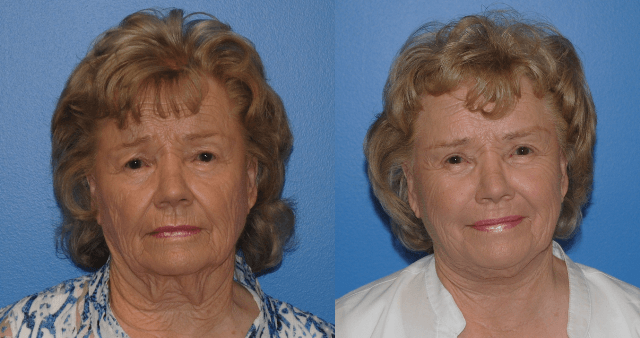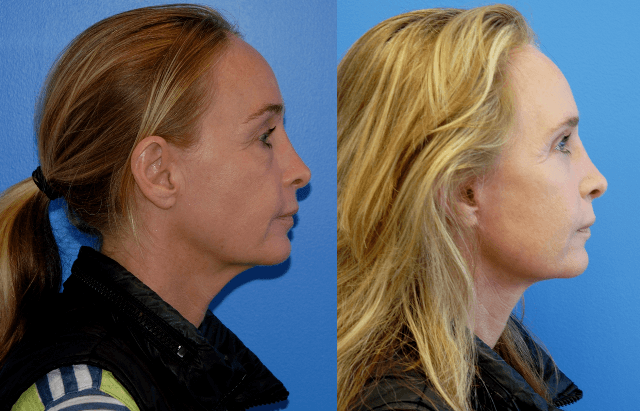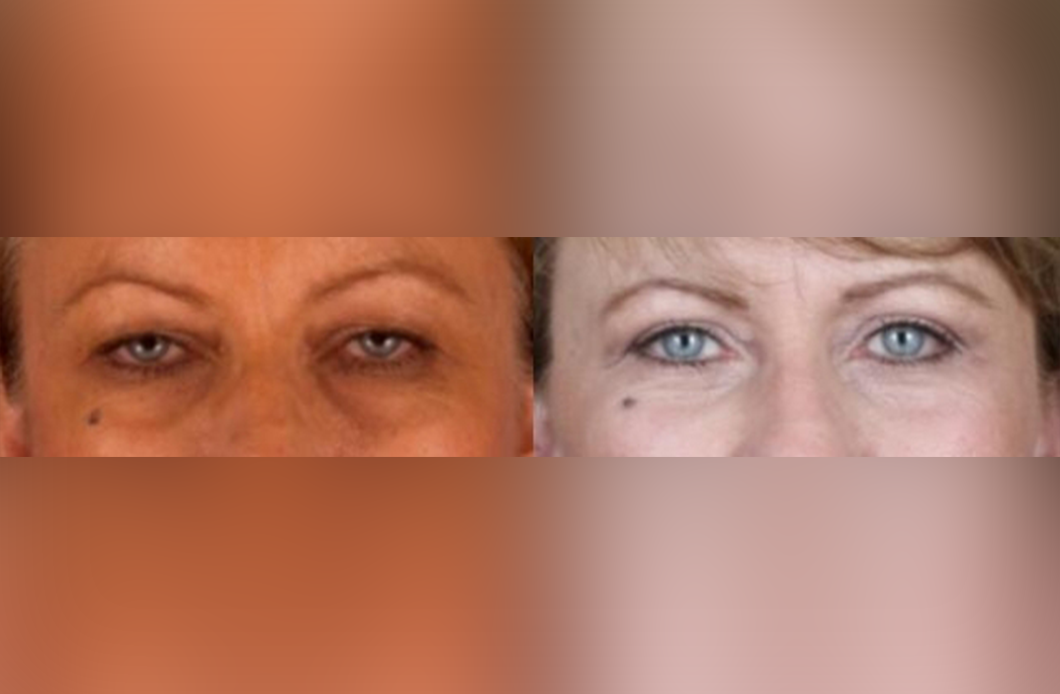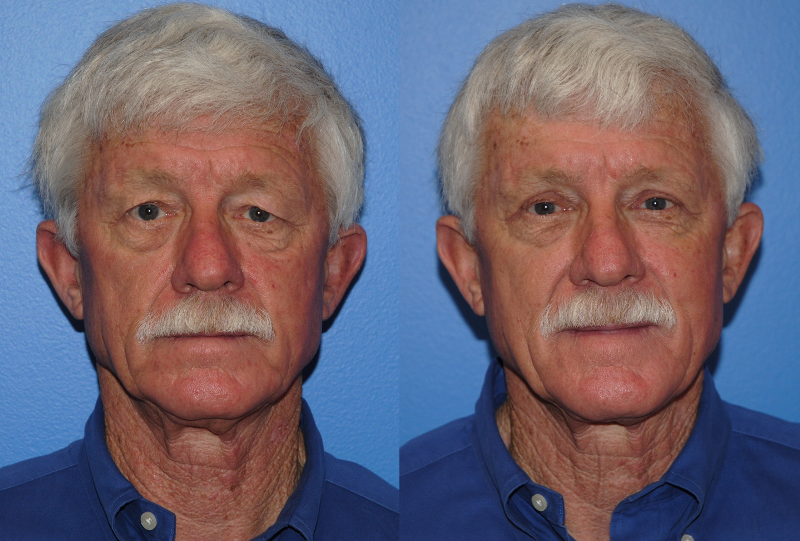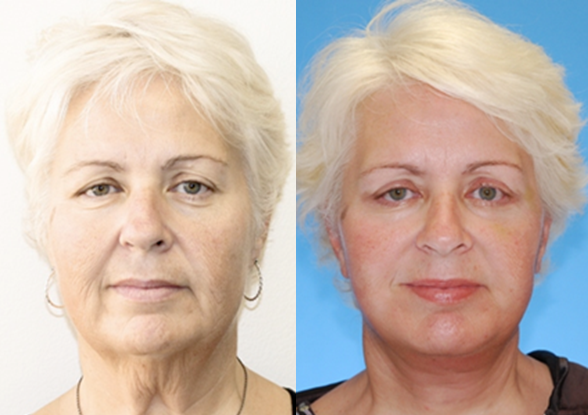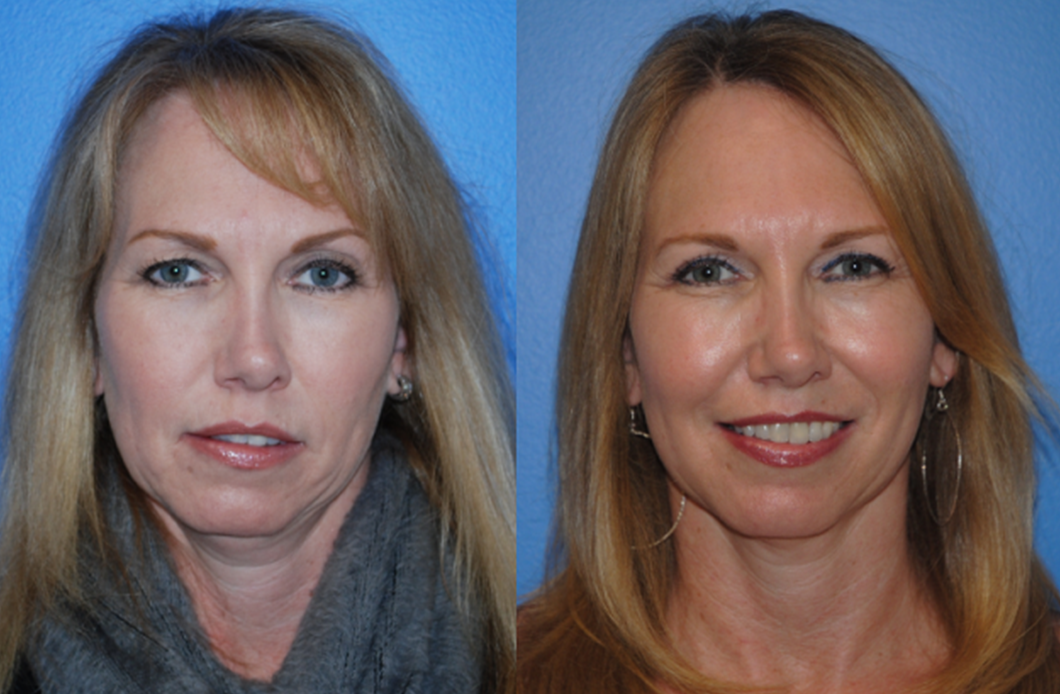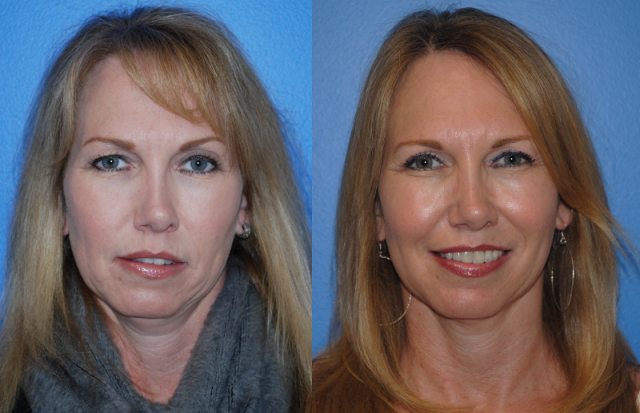Upper and Lower Blepharoplasty
Surgeon in Newport Beach, California
Facial rejuvenation surgery has been the focus of my practice for the past 12 years. This includes facelift, neck lift, blepharoplasty, and rhinoplasty. These surgeries are my favorite procedures to perform. You can learn about each of these procedures individually on their separate pages on this website.
Patients who come to me for blepharoplasty surgery, similar to the facelift patient, will say that despite getting a good night of sleep, or eating right, or exercising, that they have a tired appearance to their face. More importantly, this tired look on their face is not consistent with how they feel on the inside. These patients will even indicate that despite getting a good night of sleep or rest, other people will say to them that they look tired.
This patient is usually an excellent candidate for an upper or lower blepharoplasty. After surgery, these patients have a more youthful and rested appearance to their eyes which is commensurate with the energy they are experiencing from their core.
I hope you find the following sections on blepharoplasty to be informative and helpful. If you are interested in facelift or blepharoplasty surgery, please call the office at 949-612-8632 and ask to schedule a consultation. My staff are extremely friendly, helpful, and care about your outcome and your experience. They will be glad to help you. Brian Dickinson, M.D.
Blepharoplasty Frequently Asked Questions
Blepharoplasty surgery can vary depending upon whether you will be having an upper or lower blepharoplasty. It will also differ within the lower blepharoplasty depending upon the anatomy of your lower lid and what will need to be corrected to make your lower eyelid appear more youthful.
Upper blepharoplasty surgery is a real operation. In general, the upper blepharoplasty recovery is rather quick with patients requiring pain medication for only a day or two following surgery. Pre-operatively you are prescribed a medication for nausea to take prior to surgery and you are prescribed pain medication, antibiotics, and a Medrol dose pack for swelling. In patients with a pre-operative history of dry eyes you may need to increase the frequency of artificial tears for one to two weeks post-operatively. In upper blepharoplasty surgery the incision is made in the eyelid crease and the excess skin and fat is removed from the upper eyelid and fat compartments. Bruising can last from as little as three days to as long as 4-6 weeks depending on skin type and need to return to aspirin post-operatively. All aspirin, Advil, and blood thinners should be stopped for at least seven days depending upon the type of blood thinner you are taking. Please be sure to inform me if you are taking blood thinners.
Lower blepharoplasty surgery is also a real operation. The healing from a lower blepharoplasty is a bit more involved than upper blepharoplasty and depending upon what needs to be corrected, can require more patience on both the part of the physician and patient as the healing process takes place. Some lower blepharoplasty operations involve an incision in the pink part of the inner eyelid, or conjunctiva. Through this conjunctival incision the fat is removed from the lower eyelid fat compartments. In other cases, if there is excess skin or muscles of the lower eyelid an incision is made just below the lower eyelashes and the skin and extra muscle is excised. In these cases, if your lower eyelid has laxity, the lower eyelid may need to be tightened at the time of the lower blepharoplasty. For a lower blepharoplasty it is important to not be on any blood thinners at the time of the operation. Aspirin, Advil, and other medications to prevent clotting must be stopped in advance of the surgery. We will go over the timing of these medications in consultation or in your pre-operative appointment. Prior to your lower blepharoplasty surgery you will be prescribed a medication to prevent nausea to take before surgery and then after surgery you will take pain medication (if needed), antibiotics, Medrol dose pack, and eye drops.
Blepharoplasty surgery requires preparation on the part of the patient and surgeon. Pre-operative clearance is usually recommended based on your age. A healthy diet high in protein is important for an excellent outcome. We tell our patients to allow two weeks before they start to feel comfortable going out in public once bruising and swelling subside. But it may take several weeks to months and upwards of one to two years for the final result to come to fruition. After an appropriate amount of healing time, patients can resume physical activity.
Blepharoplasty surgery does not create a surprised look to the face. The upper lid surgery tends to heal rather quickly and patients have a good idea of how it is going to look in a couple months.
In a lower lid surgery, if there is any skin to be removed and if the lower lid needs to be tightened with a canthopexy or canthoplasty may require a period of healing. This may include some puckering or bunching of skin along the corner of the eye. This can take a couple weeks to resolve and become less noticeable, but it is an important step if people have lower eyelid laxity.
The procedure that people worry about the “surprised look” is with a brow lift. It is not common for a surprised look to occur with a brow lift. The most common brow lift procedure I perform is a brow lift through an upper blepharoplasty incision and fixation of the brow position with an Endotine device. This procedure allows a brow lift through the same access point as an upper blepharoplasty. Patient satisfaction is high with this procedure.
I do tell all of our patients that blepharoplasty surgery is a real surgery that requires a general anesthetic and appropriate attention to pre- and post- operative care to ensure proper healing and maximize the aesthetic outcome. This often entails a diet rich in protein. I encourage patients to consume 80-100 grams of protein per day for 4-6 weeks prior to surgery and for 4-6 weeks after surgery. This is to ensure proper healing and maximize the aesthetic outcome.
The upper and/or lower blepharoplasty surgery is performed under a general anesthetic. You won’t see, hear, or feel anything during the procedure. The blepharoplasty operation does not involve a very painful recovery. Typically, patients may take pain medications for 2 to 3 days before converting to Tylenol or Motrin for appropriate pain control. For the first two nights we encourage patients to sleep with their head elevated. It is easiest to sleep on a recliner or couch. A traveling neck pillow is helpful to keep your head elevated or propped up when sleeping on the couch or recliner. Sleeping with your head elevated for 2-3 nights helps control swelling and pain. In general patients do not experience a lot of pain after a blepharoplasty operation. Compliance with head elevation and ice compression can facilitate healing and pain control.
The results from an upper or lower blepharoplasty are very powerful with the goal of not being very noticeable. As the face ages, the brow descends, and skin accumulates around the upper lid and fat begins to herniate through the lower lid creating a tired appearance to the eye. Small, subtle changes to the eye can yield a large difference. In younger men, simply performing an upper blepharoplasty alone or in combination with a lower blepharoplasty can give a significantly more youthful appearance to the face without performing surgery on the lower face. Often men choose to have an upper and lower blepharoplasty first and then come back several years later for a lower face and neck lift. In patients who wish to have upper and lower blepharoplasty as well as a facelift, I often encourage patients to do this in stages. The first stage being the upper and lower blepharoplasty and then the second stage being the lower face and neck lift. The results from the upper and lower blepharoplasty are noticeable in that friends and family will often notice a youthful appearance to your face, but they may not be able to directly identify the change. Family and friends will simply state that you look more refreshed, healthier, or that you are healthfully losing weight.
When you select Dr. Brian Dickinson as your surgeon, the process for getting started is as follows:
- Initial consultation: Call the office to make an appointment for an initial consultation. The consultation will take approximately 30 minutes to one hour. During the consultation we will look at your medical history and we will then listen to your concerns regarding your facial aging. We will listen to what your goals are to improve your facial appearance or the appearance around your eyes. We will then formulate a surgical plan based on your desires and what is possible. During this consultation we will take photographs of your face and neck with standard photography as well as with 360 degree photography.
- Medical Clearance: In general, patients who are undergoing facial rejuvenation surgery will need to have a medical examination by their primary care physician prior to their surgery. The pre-operative clearance labs and physical examination by your primary care physician should be done within 4-6 weeks of your surgery. Lab results are also collected which include CBC platelets, Chemistry, PT/PTT/INR. These are labs that are necessary to complete your pre-operative clearance. If you are older than 50 years old and a male you will need an EKG and if you are older than 60 years old and a female you will need an EKG. If you currently have a cardiologist who manages your blood pressure you may see them, and it may be easier for you to see them for your medical clearance.
- Second consultation (if needed): There are times when the initial consultation does not address all of your concerns or my concerns regarding your surgery. I highly encourage facial rejuvenation and blepharoplasty patients to come back in for a second consultation if they have any questions. It is very important for me to understand what your goals are and which part of your facial aging you would like to correct.
- Pre-operative appointment: Prior to your surgery we will meet for a pre-op appointment. During the pre-op appointment we will collect any payment for your procedure, or you will have paid for your procedure. During this appointment we will prescribe your medications prior to your surgery. You will be prescribed medication for nausea, medication for pain, antibiotics, and medication for swelling. During this visit we will likely take another round of photographs and we will go over your goals and answer any additional questions you may have.
- Procedure: The upper blepharoplasty surgery lasts between 1 to 1.5 hours. The lower blepharoplasty surgery lasts between 1 to 1.5 hours. When done in combination the procedure lasts between 1.5 to 2.5 hours. The procedure simply takes as long as it takes. It is not a procedure that I rush to complete. The surgery requires a general anesthetic. You will not see, hear, or feel anything during the procedure. Even though the surgery is under a general anesthetic, we still use local anesthetic for pain control. In the recovery room and during your overnight stay in the surgery center the nurses will give you medications for pain and nausea. Patients usually report that the pain following a blepharoplasty is minimal and they are surprised at how painless the recovery is. The most common complaint is itchy or irritated eyes when we perform lower lid blepharoplasty.
- Follow-up: I will see you the next morning in our office at 351 Hospital Road, Suite 415. At that time we examine the skin and may give you some exercises to do with your eyelids. This examination is more for me than for you. During this examination I look for any signs of hematoma and for any signs of infection. You may have a general idea of the improvement from surgery, but there is often swelling which makes it difficult for patients to appreciate the improvement. I will see you once a week for six weeks, then at six months, and then again at one year. In general, I tell patients that it is about two weeks before you are comfortable going out in public, but this is variable.
- Along the scar on the upper or lower lid patients may notice that the scar becomes thick which normally increases until about 6 to 8 weeks after surgery. This is a normal healing process, and the scarring continues to become thicker before it starts to improve. The scar continues to remodel and soften over the next six months to two years.
- Post-op Instruction Cheat Sheets can be downloaded by clicking on the link. Blepharoplasty post-op instruction sheet: Brian P. Dickinson MD-Post op Blepharoplasty Procedure Medication Instructions July 2022 Version
Take Me to the Blepharoplasty Surgery Blogs

